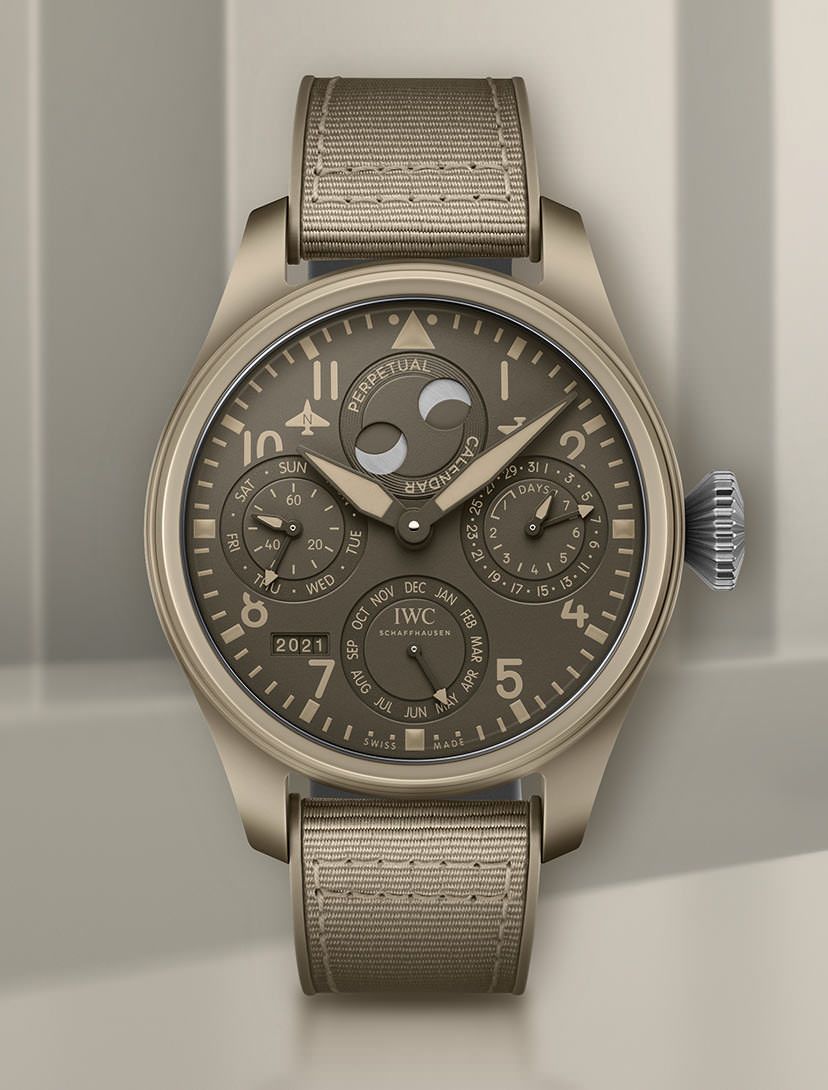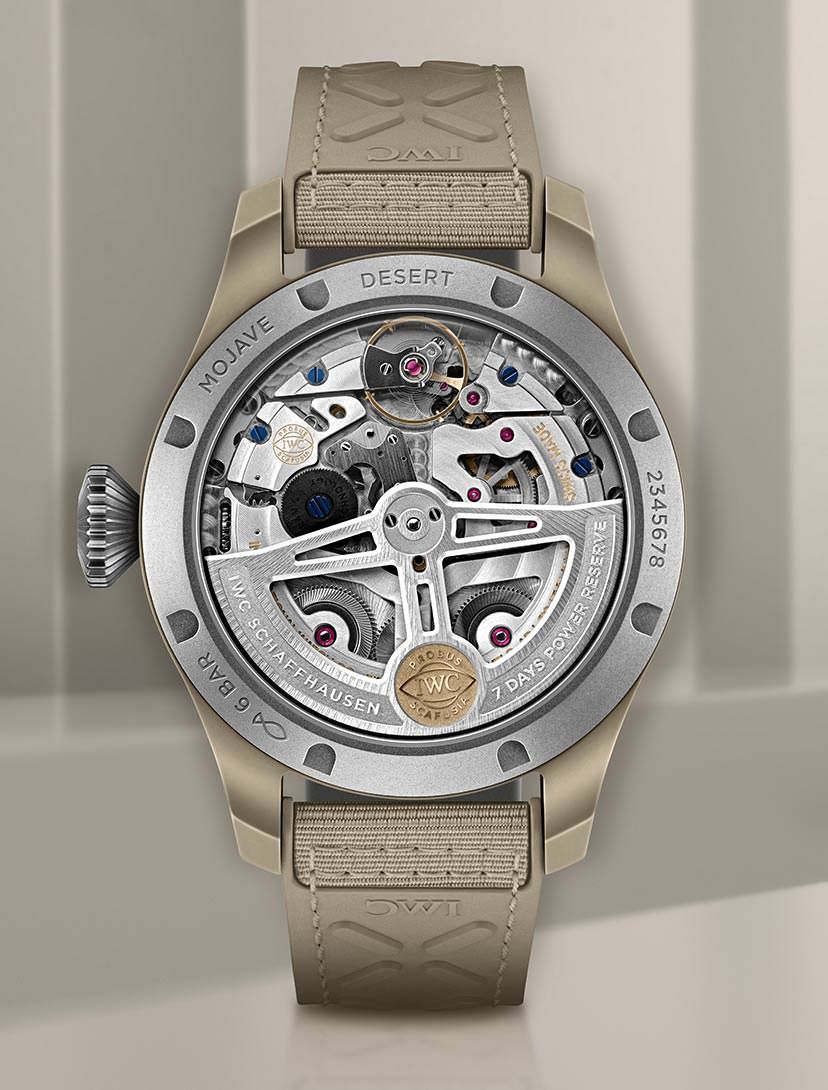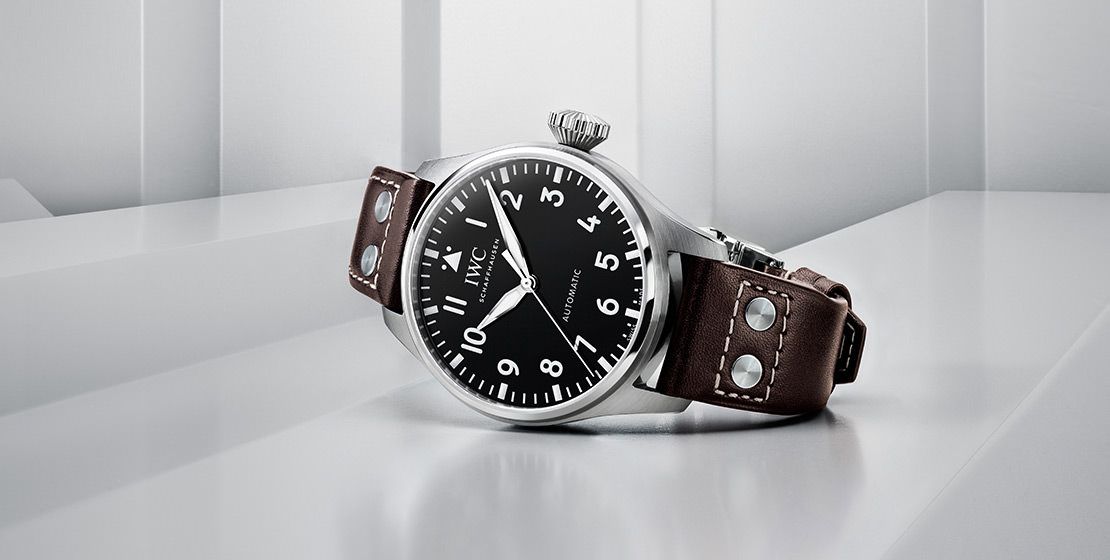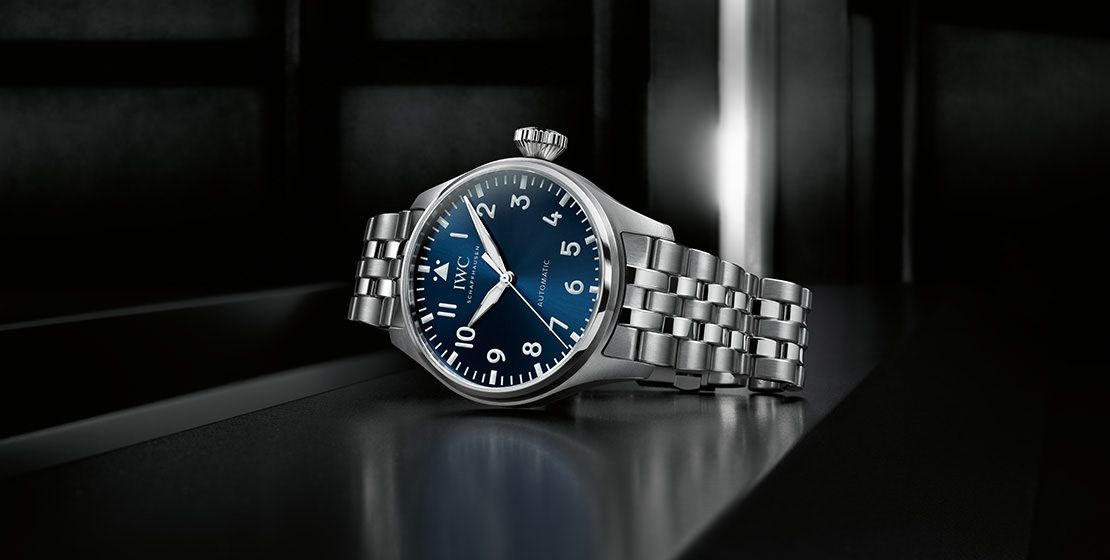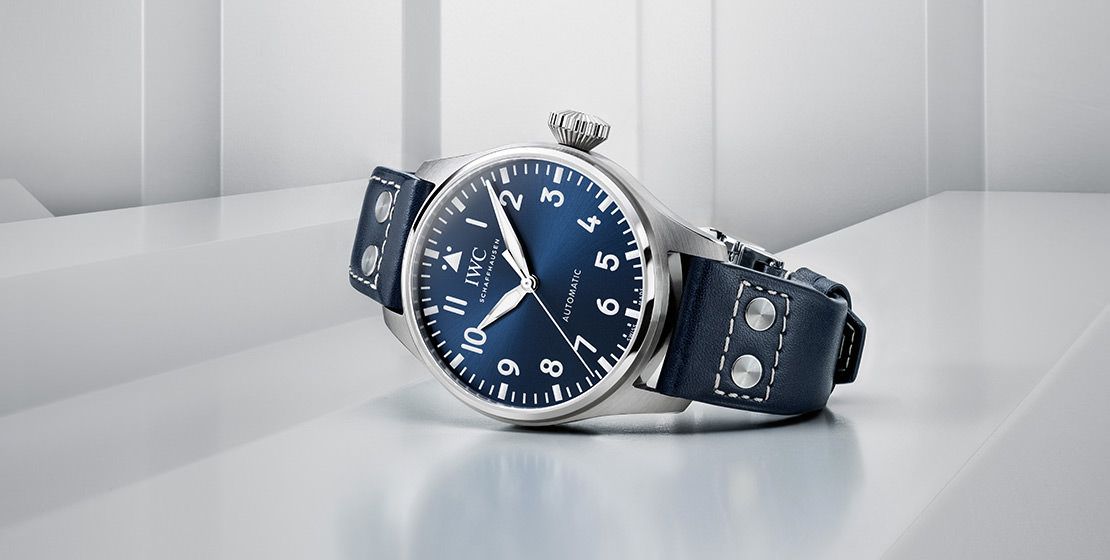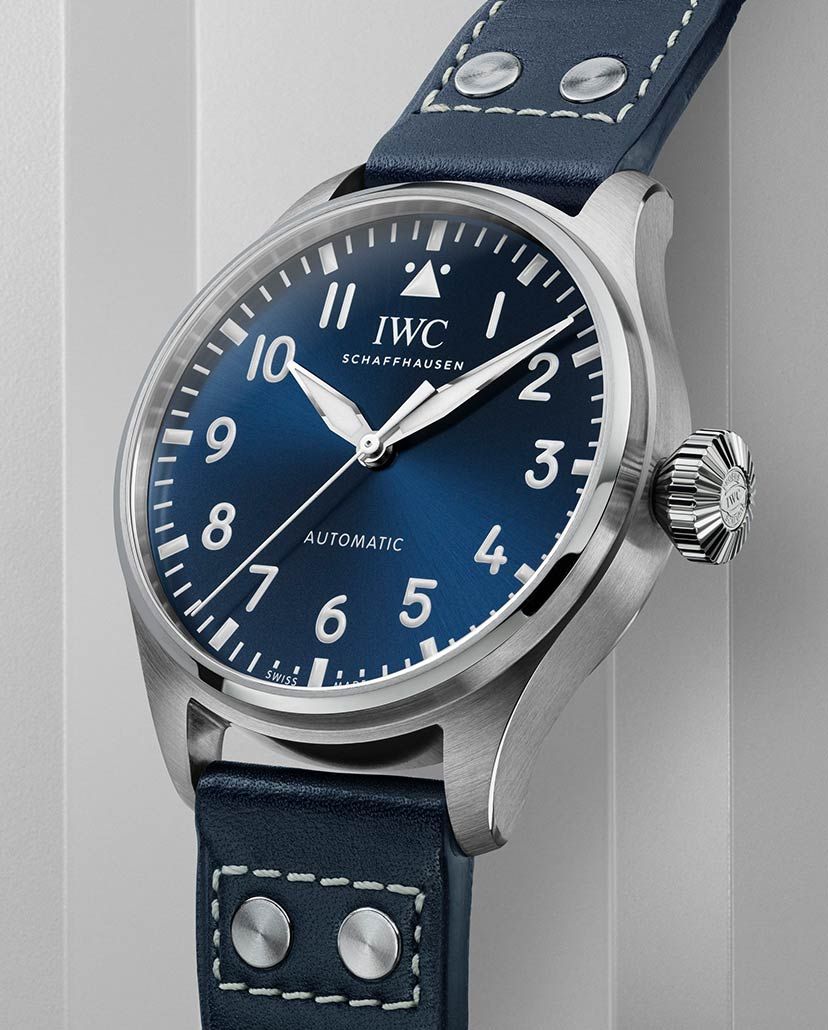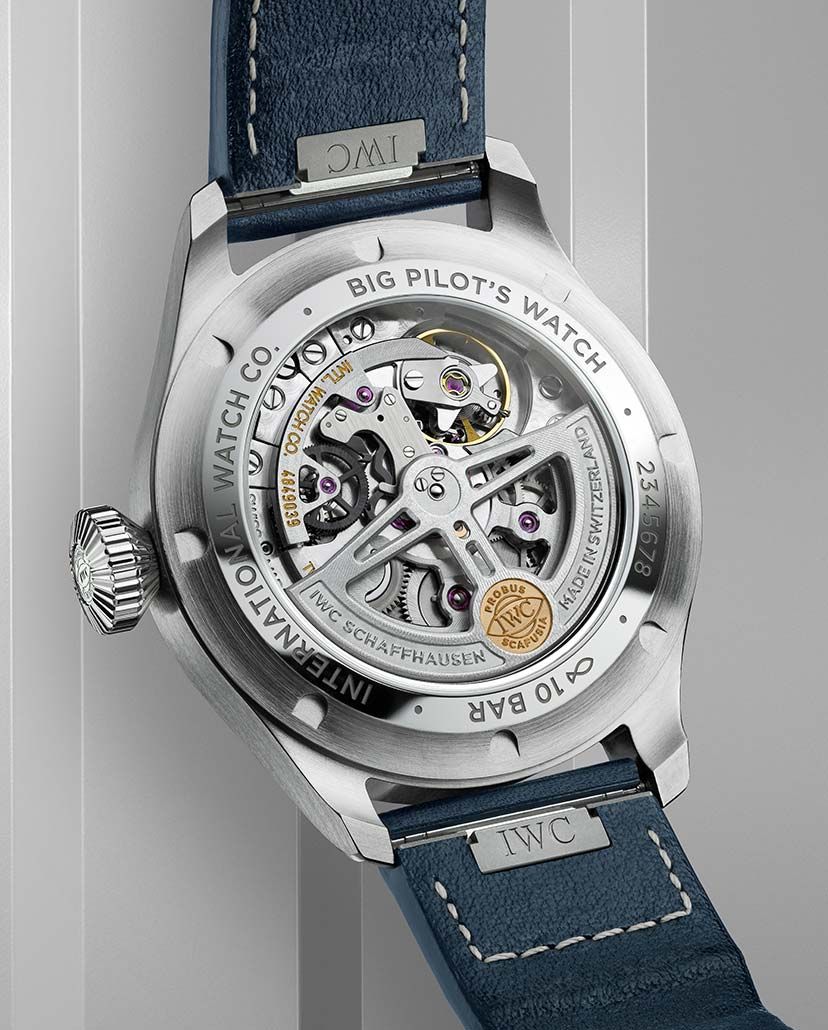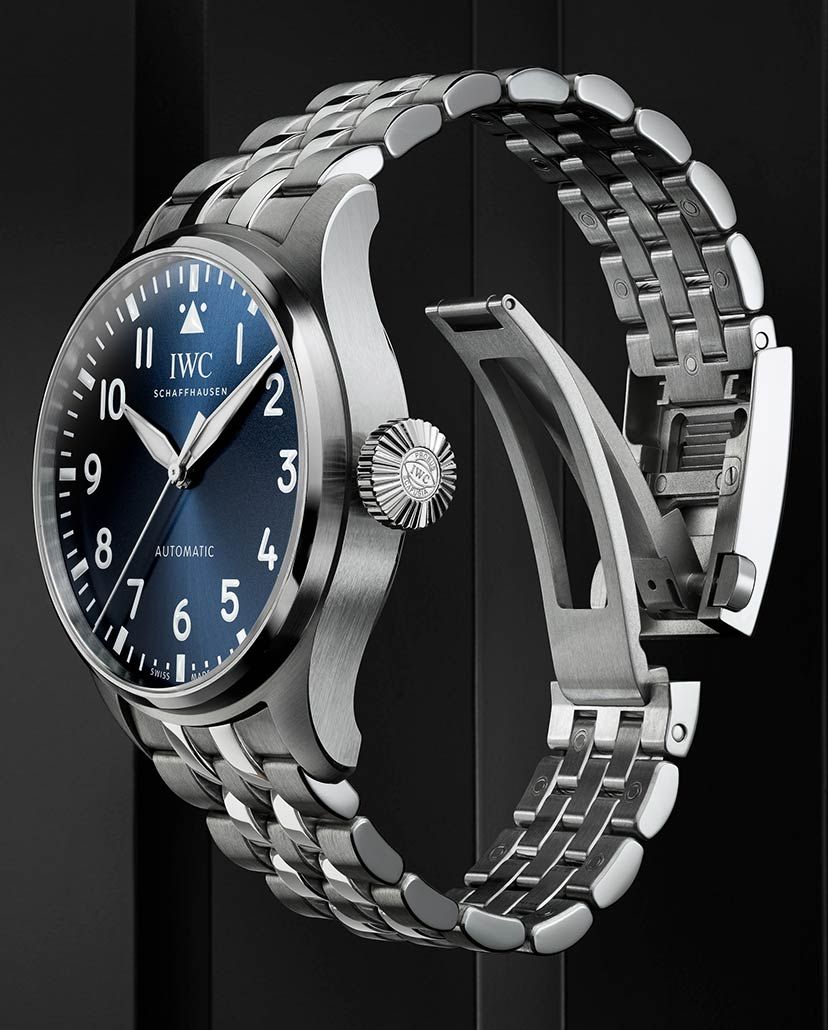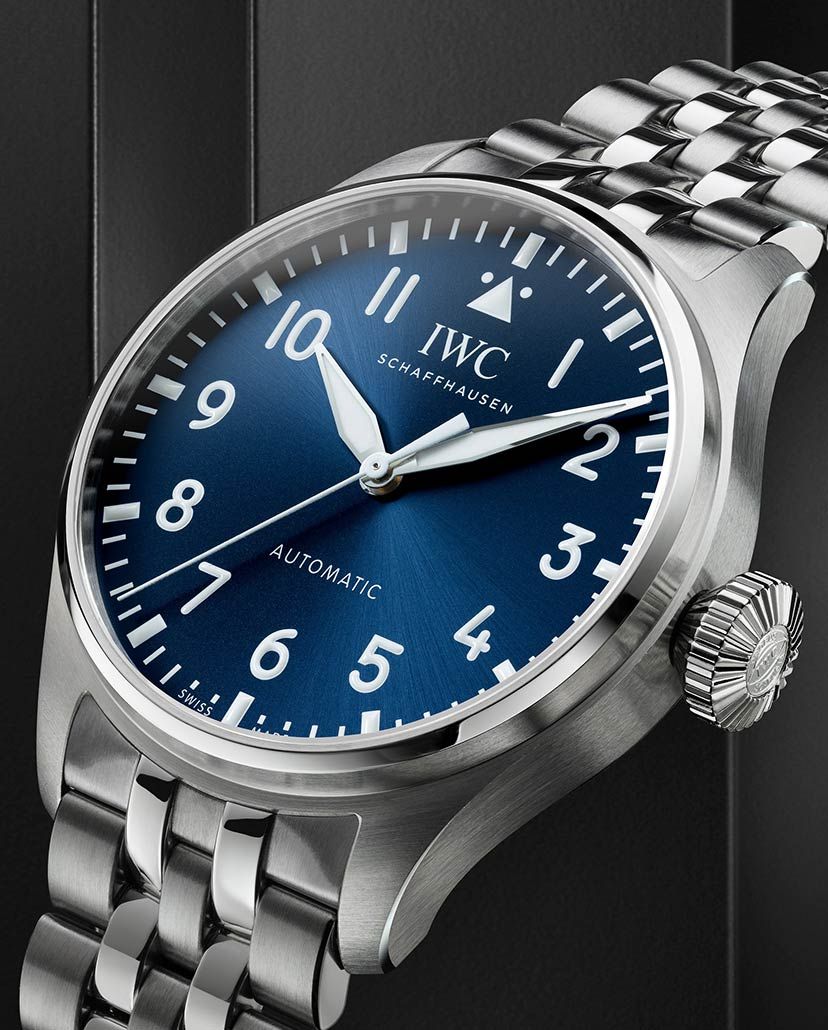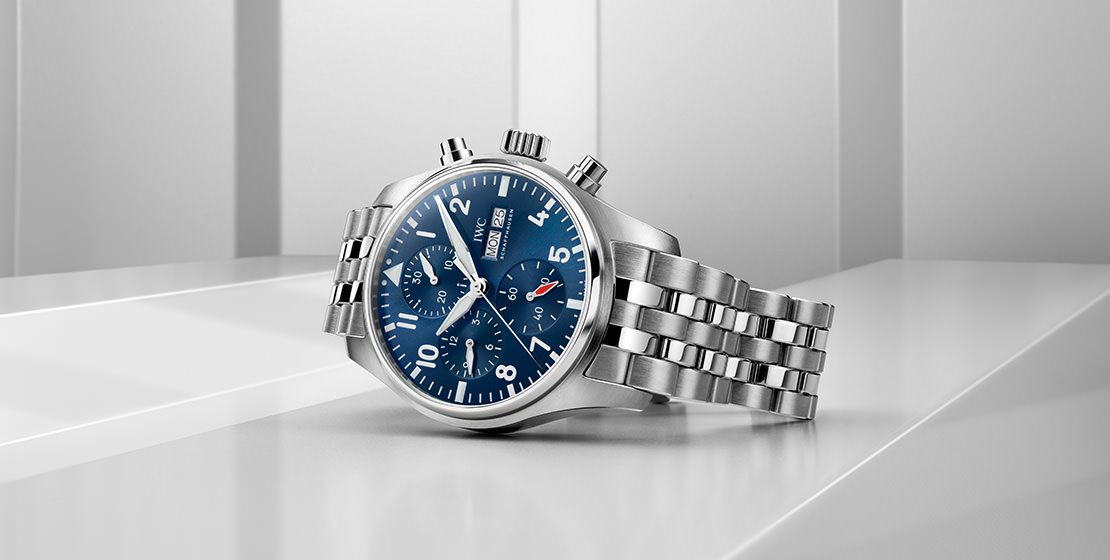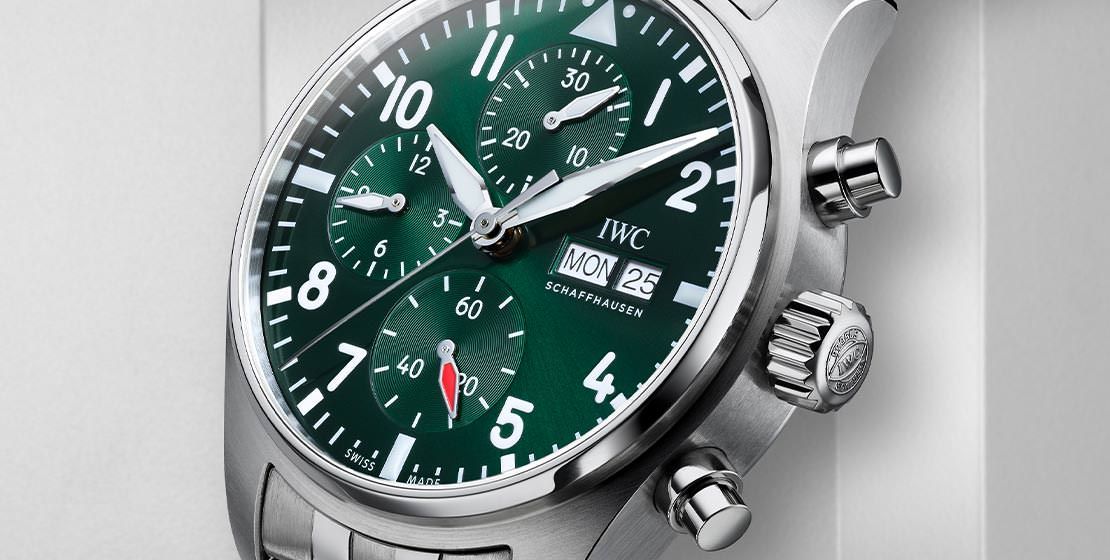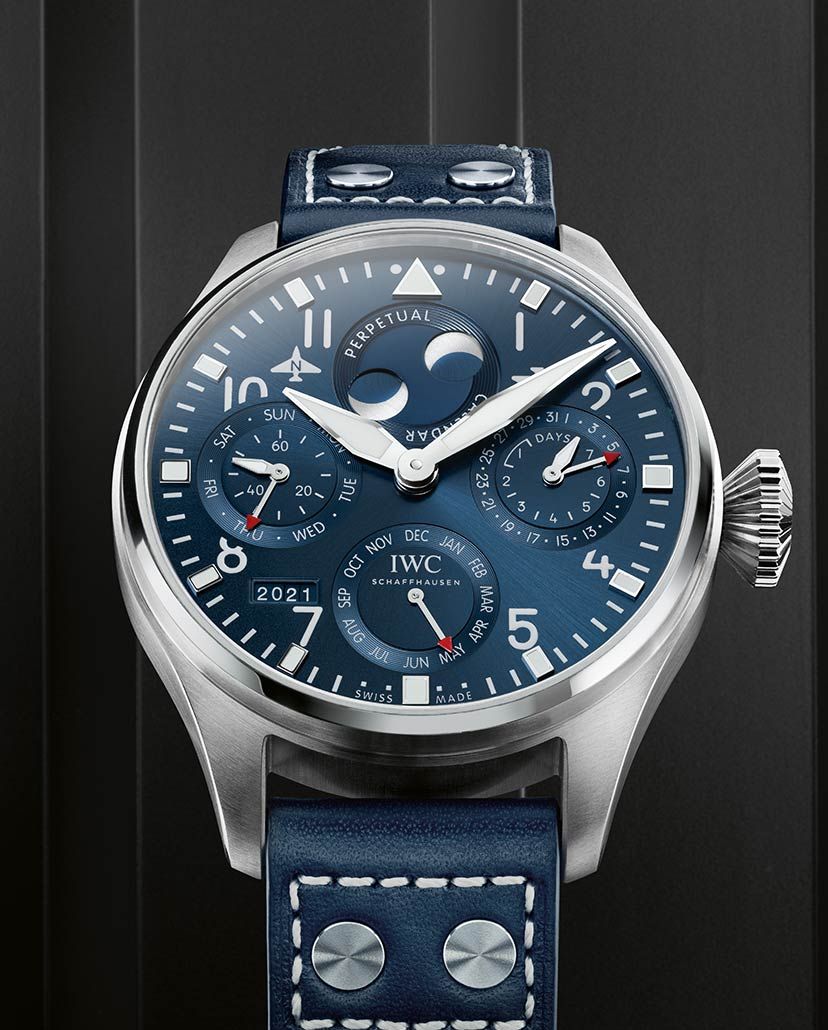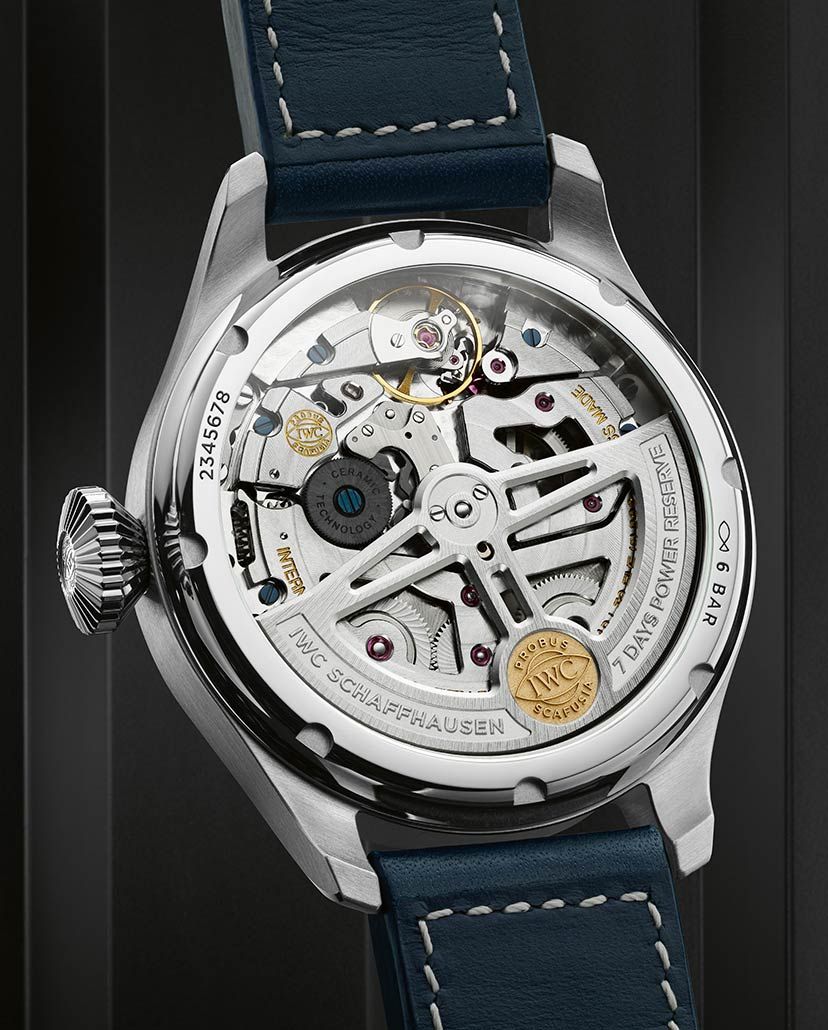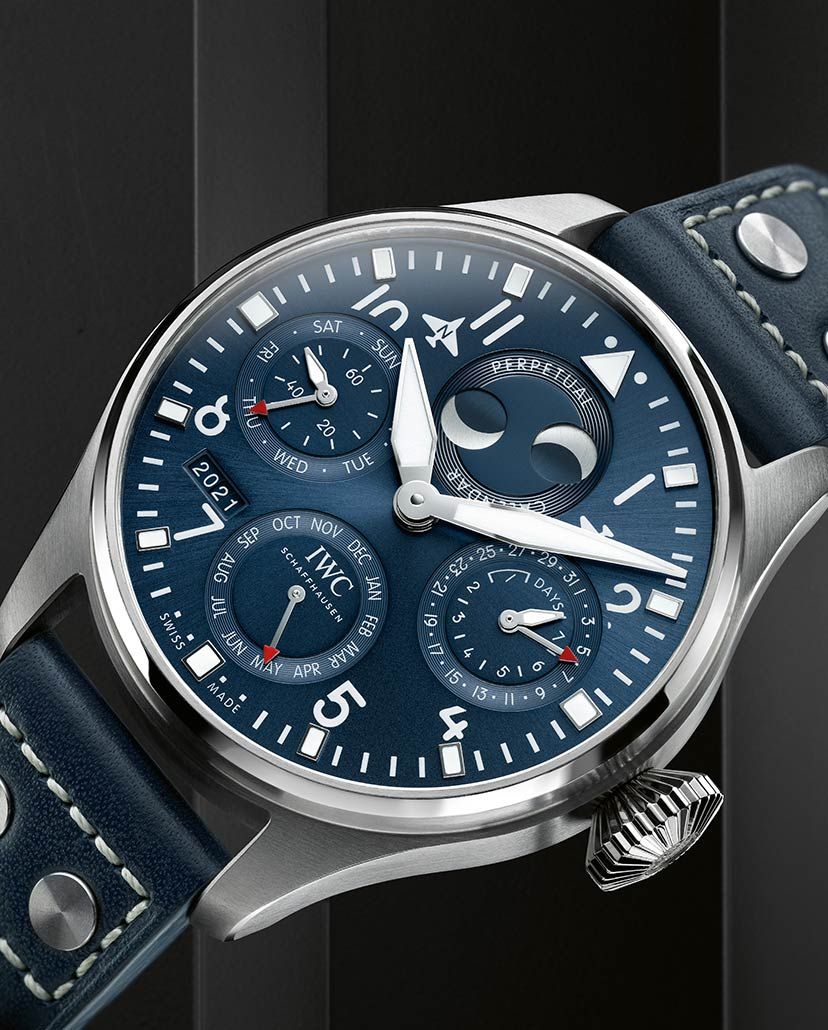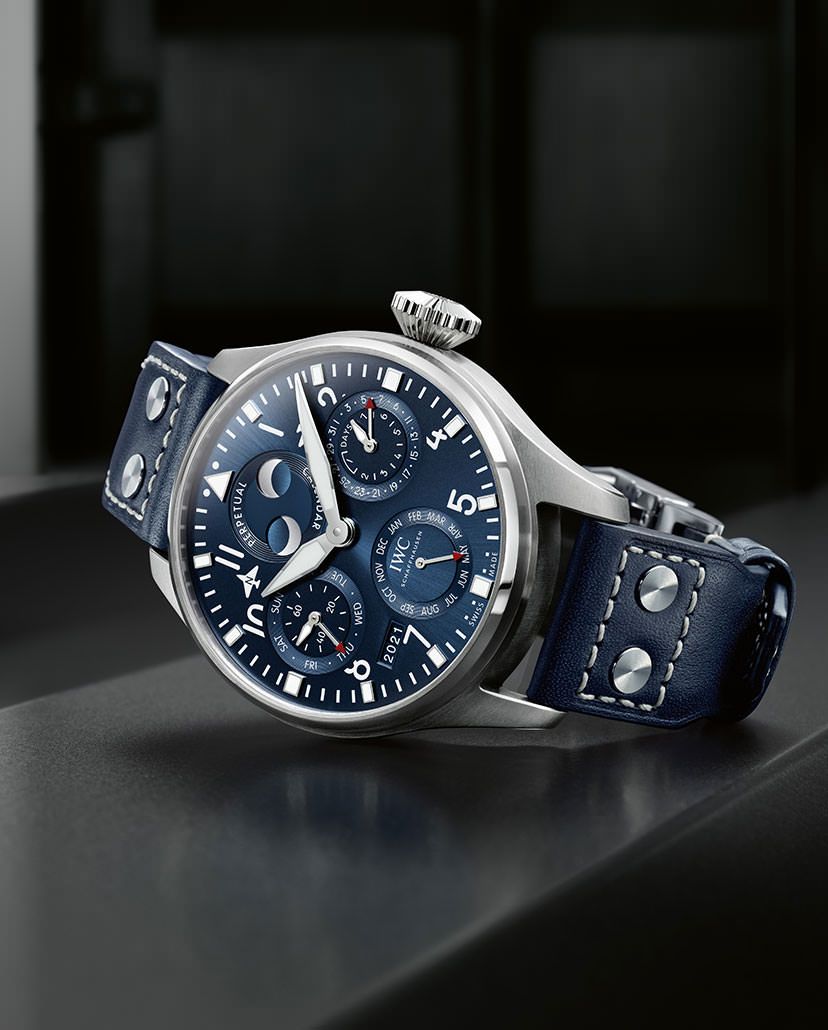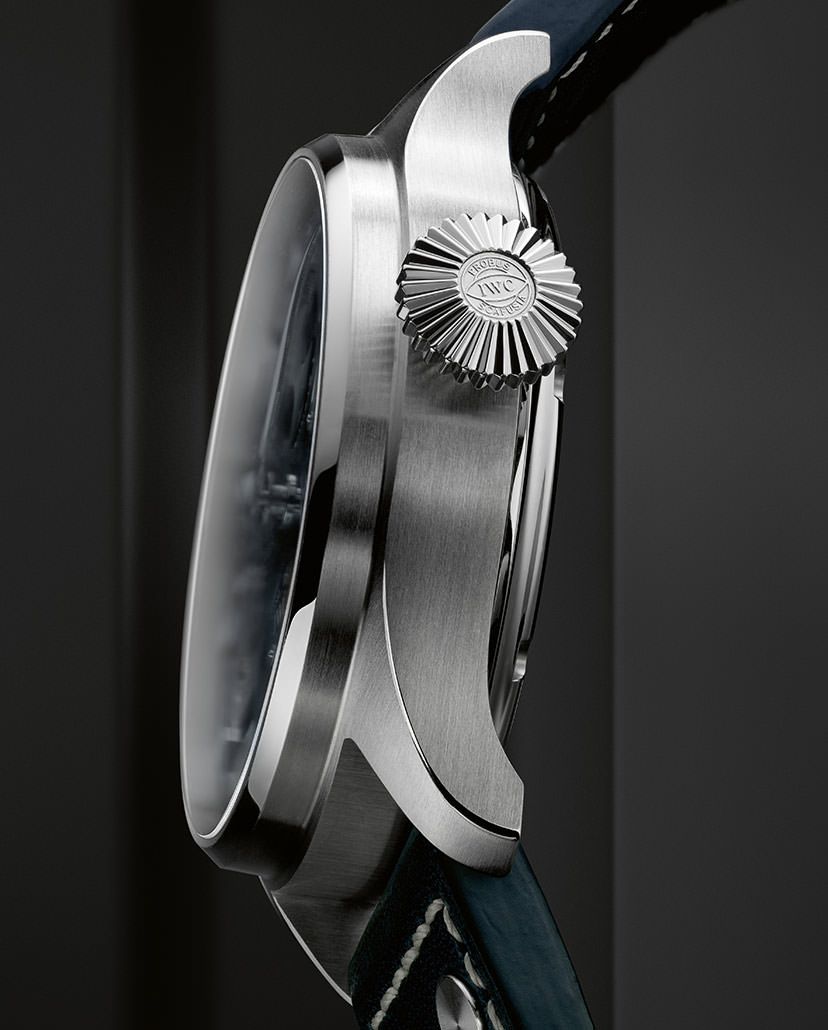Q&AIWC Went Big With Their Pilot’s Collections At Watches And Wonders—Highlights, With Insights From Creative Director Christian Knoop
With the unveiling of the extreme shock-absorption system of the new Big Pilot’s XPL, IWC have also expanded their Top Gun Mojave Desert series, and given the Big Pilot’s and Pilot’s watches bigger appeal with smaller sizes. The brand’s creative director took some time to tell us about the novelties
May We Recommend
Some of the most well-known watches of our times originated as instruments for professionals, in various fields, where they formed an integral part of the professionals’ toolkits. Today diver’s watches are not meant only for diver’s, nor are pilot’s watches meant only for pilots. The likes of IWC have played an important role in helping such products transcending their original purpose, turning them into lifestyle timepieces over the years, while retaining distinctive codes of the fields they were originally meant for. Yet, when you’re IWC, even though you make Pilot’s watches for anyone who appreciates them, you still hold on to certain ties with the field of aviation, to reinforce your strengths in the field and your know-how. So this year, the Schaffhausen-based brand have taken their strengths and applied them to create an instrument that can withstand the extremities of actually being in a fighter jet cockpit.
The Big Shock-Absorber
The new Big Pilot’s Shock Absorber XPL provides its mechanical movement protection against acceleration forces up to 30,000g, which is 30 times greater than the maximum that a watch may have to withstand on impact with the metallic interiors of a cockpit. Probably the most futuristic IWC Big Pilot’s we’ve ever seen, this one displays is shock-absorption apparatus in all its glory.

Parts of the ‘SRIN-G’ protect system—made from bulk metallic glass—and the flexible coupling between the crown and the movement can be seen as framing the otherwise quite typical IWC Pilot’s dial. It ensures that the impact of any force is dissipated across the surface of the movement, which is made with lightweight aluminium components. All this is housed within a ceratanium case—ceratanium being IWC’s proprietary fusion of ceramic and titanium that offers the scratch-resistance of ceramic, with the structural integrity and lightness of titanium—with outer silencing rubberised bumpers. Considering all of this, it’s quite surprising that they’ve kept the size to 44mm.

The Elite Pilot Squad
The XPL of course, came from intensive research and the brand’s know-how from having worked with actual fighter pilots, even supplying watches to them. One such strong association is reflected by the Top Gun series of watches named after the US Navy’s Strike Fighter Tactics Instructor programme, which trains the finest US Navy pilots. In 2019, the brand unveiled the Top Gun Chronograph Mojave Desert edition in sand-coloured ceramic, named after the desert in California—home to the Naval Air Weapons Station China Lake. This year, the Mojave series extends into a three-hand automatic with a power reserve indicator, and a Big Pilot’s Perpetual Calendar. The latter features IWC’s signature perpetual calendar dial, with the day, date, month, year, moon phases in the Nothern and Southern Hemispheres, and a power reserve indicator and small seconds.
Instruments For A Modern Lifestyle
The perpetual calendar now comes in a new 46mm regular Big Pilot’s as well, in blue this time. However, this is just one of the updates to the main Pilot’s and Big Pilot’s Watch collections. The whole range just became more wearable, and suitable for a much wider audience. The Big Pilot’s, formerly at 46mm, is now at 43mm, with a recalibrated case design. Every dimension was looked at individually to suit the smaller size and offer better wearer comfort. Major updates include tweaks to the signature oversized onion-shaped Big Pilot’s crown so as to prevent it from poking the wearer’s wrist. Ease and comfort are of absolute importance obviously. The new size also allowed IWC to offer this watch with a bracelet strap, since the weight of the case has reduced. This is especially good because of the easy-exchange system for strap interchangeability—an increasingly essential feature in watches today. Even the Pilot’s Chronograph has gone smaller—from 43mm to 41. It’s been released in blue and a very popular hue these days: racing green.
We had a word with Christian Knoop, creative director of IWC a few weeks prior to Watches and Wonders. While he didn’t spill the beans on the XPL—saving its revelation for the event—he did take us through the updates to the Pilot’s and Big Pilot’s collections. Knoop also spoke about the creative process at IWC, the stages of creation, and how the brand stays modern, while also respecting its legacy and DNA. Here are excerpts from the Zoom conversation we had.
Talk about the Pilot’s novelties and what this update means for the brand.
We are focusing on the Pilot’s Watches, which is one of our oldest collections, going back to 1936, and has played an integral part in IWC’s history since then. It’s a collection that has evolved a lot. It started with timepieces for professional pilots that could withstand the harsh environment of a plane cockpit. The early timepieces followed military specifications. They were even made for the Royal Air Force. They were designed with the principle of ‘form follows function’. Every element had functional purpose—dials had to absolutely legible, the straps had to be long enough to wear over a flight jacket, and so on. IWC were also among the first to present the archetype of a pilot’s watch as a luxury timepiece, and not just a tool for professionals. It was a very new concept then, and a lot has evolved over the years. These watches went from simple three-hand timepieces to those with complications. Chronographs were added in the 1990s; and more recently, the perpetual calendar. This watch has also evolved from a hierarchy of form following function, to offering more of a balance between form and function. Even the finishing and materials have evolved to be more in line with what you’d expect in luxury watches.
So there is far more variety that has come about over the years, even in sizes and styles. There are classic styles and even more technical watches—such as the Top Gun models. And today, we have the Big Pilot 43, which is a new interpretation of the 46mm. It even has an easy strap-exchange system and a transparent caseback, among other updates. We’ve been working on the essence of the products, but also the collaborations. We have modified our storytelling from purely talking about pilots and watches for pilots, to also presenting pilot’s watches as lifestyle products meant for anyone, and not just for someone with a flying license. Yet, we keep working with top elite squads of fighter pilots, such as those from the Top Gun programme, who even wear our special editions. And it’s not just the US Navy, but air forces elsewhere in the world as well.
IWC tend to focus on one collection every year. What drove the brand to showcase the Pilot’s and Big Pilot’s lines just two years after their previous editions shown at SIHH 2019?
Pilot’s is one of our most successful collections, in terms of storytelling, but also commercially. It’s important to maintain the momentum in this collection. We have also evolved since 2019. That collection was more for the ‘gentleman aviator’ and aviation enthusiast, and about renewing the Spitfire collection with bronze, green and so on. It was more vintage aviation-inspired. It was just one aspect of what IWC’s Pilot’s watches are. This time, the focus is not on the vintage-inspired; but instead on the more modern, yet timeless pieces. We want to present the Pilot’s collection as a one that has a striking modernity in its design codes; and is not only about telling exciting stories of real pilots, but also a collection that has inspired and spoken to so many worldwide, whether they have links to aviation or not. It could be for sportspersons, for entrepreneurs…for anyone really.
How do you decide on which collection to focus on each year?
We have a design team in Schaffhausen—specific designers for each collection, who focus on their own collections all the time, exploring new opportunities, new ideas and innovative aspects. Depending on the maturity of these ideas, along with the development of movements and availability of materials, etc, from our technical teams, we decide whether or not it’s time to launch the next edition of a collection. So it’s all about the right timing for every collection.
However, as you’ve probably noticed, we’ve now moved away from launching everything for the whole year at one watch fair (SIHH or Watches and Wonders). Now, we go for more of a phased launch, to keep the momentum of our novelties going. So here, we’re launching these Pilot’s and Big Pilot’s watches, but sometime later in the year, there will be other launches as well.
How does the IWC Pilot’s collection stand apart from aviation watches by other brands?
Yes, there are other brand that share a similar history in the manufacturing of pilot’s watches. A couple of brands have a very different aesthetic, while others have a similar archetype. However, there’s no other brand that has the same variety—from 36mm to 46mm in sizes, and from three-hand pieces to chronographs, perpetual calendars, and even tourbillons. There’s no other brand that offers something at the entry-level, like the Mark XVIII, as well as the much higher-end constant-force tourbillons that we’ve had. With such broadness in variety, as well as our ties with professionals, our Pilot’s watches really do set us apart.
We haven’t seen any new editions of the Ingenieur, Aquatimer, Portofino and Da Vinci lines in a long time. Are there plans to discontinue any of these collections?
No, we don’t plan to discontinue any of these. Everything is in development as I mentioned. We’ll have new editions of these collections out when the time is right.
How are products conceived at IWC? What is the creative process like?
We typically say that the development of a watch takes about two years (sometimes three). In the first year, we have the design development. There are sketches, renderings, prototypes and so on. For instance, now with the new 43mm, the key challenge was to find a size that was more wearable, but still had a significant visual impact on the wrist. We spent a lot of time with prototypes, 3D prints in plastic, even metal prototypes, the strap-change system, and so on. And there’s also the aesthetic aspect—to find a design that is true to what came before, but is still modern. So a lot of dial prototypes are also done. All this takes the first year. The second year is about preparing for industrialisation and quality and so on. Quality is key. We do tests over months sometimes to finalise what’s being developed. We try to simulate the lifetime of a watch—which can be 20, 30, 50 years even—compressed within a few weeks and months. Then we prepare the product for serial production, with tooling, setting processes, training employees, etc. Finally, prior to the launch, we sample the products that are about to hit the markets.
IWC’s portfolio is very classic in its appeal. How do you manage to stay innovative, while also maintaining the signature look of your products?
That’s a question we ask ourselves with every new edition—how to stay true to the brand’s codes and every collection’s codes, while still innovating and surprising our consumers. It’s a fine line. If you stick to one end of things, you become repetitive and vintage. If you go too advanced, you lose the connection to the brand’s DNA. Our challenge as designers is to maintain the balance between the history, the design codes, as well as the innovation, and to also managing to surprise our audience.
Almost every year we see a perpetual calendar from IWC. Talk about the significance of this complication.
The perpetual calendar is very much linked to our history, and Kurt Klaus’ invention—in the 1980s—of the first, fully-synchronised perpetual calendar that could be adjusted only using the time-setting crown. We see several competence areas for ourselves as a brand. We don’t want to innovate in all directions. We have a clear field of competences when it comes to materials, for instance. We were the first brand to come out with titanium watches and with ceramic watches. We are also very much in the territory of chronographs. We are the only brand in the watch industry with three modern chronograph calibres in our current production, and even the rattrapante or the double chronograph. And then in calendar complications, next to Kurt Klaus’ invention, we have calendar features other than the perpetual calendar. We have annual calendars, moon phases and the double moon phase, which is an IWC patent. So we’re in strong innovation territory here, based on our developments over decades.
Ceramic has been growing very popular lately. Given your expansion of the Mojave Desert series in sand-coloured ceramic, could you tell us a little bit about IWC’s use of this material?
Yes, so ceramic and ceratanium are among the innovations I was talking about. From using zirconium oxide, to introducing more sophisticated ceramics such as silicon nitrite or boron carbide—which is the hardest industrially-available ceramic—we also branched out into coloured ceramics. We also believe there’s more to do with ceramics, with colours in cases, but also in movement components. So yes, ceramic is a very important material for us.

How has the pandemic impacted your launch plans and other creative decisions in the last one year?
The pandemic has affected all of us, our business and the way we interact with our customers. It’s also been fascinating to see this release of creativity in finding more ways to talk to clients, present products. Our teams have been very creative and passionate about this, while also being able to maintain client relationships. At our headquarters, we’ve used our creativity to push the brand’s storytelling forward entirely through digital channels, with videos and movies involving our ‘friends of the brand’ to stay in touch with our customers worldwide.


